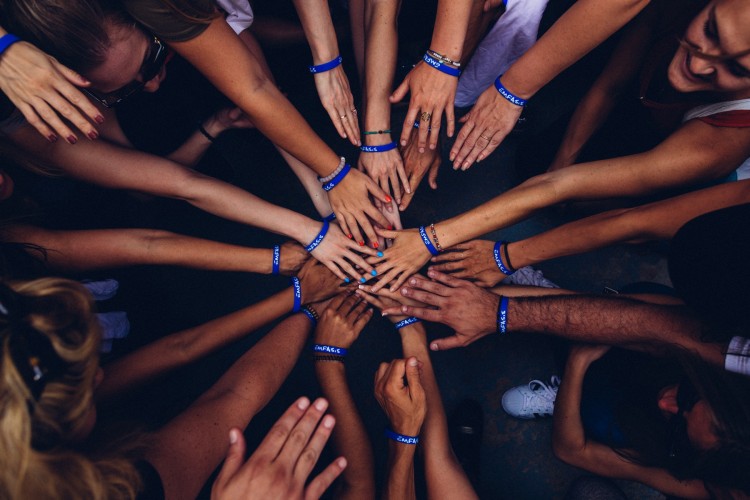
Defining service needs and creating effective systems to respond is the first important steps to creating a sustainable program. Finding the appropriate resources to fund your plans is the next step. Most agencies will not receive one line of funding from one funder to meet the diverse needs of the youth and families they are serving, so looking to multiple funding sources is a necessity.
- Decide your services first, and then find your funders. This can be easier said than done. Funders tend to release funding opportunity announcements for very specific services to very specific populations, and to get access to those dollars, you must be responsive to the limited scope of services. It is understandable to consider how you can adjust your plans to be responsive – it is even encouraged to be flexible in your strategic planning – you just need to make sure that you are clear on whether the funding is the right fit. Create a strong fund development plan and include SMART (specific, measurable, achievable, relevant, and time-bound) goals and monitor the progress. Chasing money that is not a good fit for your program’s mission and services plan will most likely lead to a drift in your service plans that was not pre-determined, and many times, results in services that are not developed and delivered at the highest quality.
- Diversify your funding streams. Do not overly rely on any one funding stream to support your services, even if that is easiest. The more reliant you are on a funding stream, the less sustainable your efforts will be as you both risk a funder pulling out of your project, and you lose the opportunity to engage other funding partners that can be just as excited with your service plans. Consider private and public funding, including local, state, and federal government funding, foundation funding, earned income, and individual donations. Even consider enterprise-driven business, such as Tumbleweed’s Tumbletees initiative. And think proactively and outside of the box. As a field, we need to leverage natural partnerships and demonstrate our connection/value add to their fields. For example, healthcare is a natural home for our work as the future is about keeping people healthy in their communities. Who better to be paid to do this than the community-based agencies that are the safety net for youth and families? Consider these unique partnerships that align with your mission and demonstrate your value.
- Braid your services. Most likely, you are already doing this but not using the name. As discussed, identifying the service needs is first, and then getting funding is next. For example, consider a program to support youth transitioning out of foster care. Some services identified are housing, life skills training, education and employment services, mentoring, and access to mental health and other counseling services. You connect with your community collaborators and determine which services need to be developed as part of this program, for which you will find funding. These streams of funding are braided into your services to make one program experience for the young person in your program.
- Braid your funding. With braided services, there is braided funding, which on the administrative end can be much more complicated as each funder has their programmatic and financial expectations and requirements. It is important to have a clear system for tracking funds and services on the front end so as to ensure you remain in compliance as you piece together the funding for your services. Spark Policy Institute’s resource, Blending & Braiding Toolkit, can be a good place to start this process (or to check on current practices).
- Develop and communicate your brand. Your brand represents your work. It helps you keep your mission in front of the community- including funders, the public, and policymakers. It is not just the color fonts and logos you use. It is how you communicate to others your mission, vision, values, and services. When people hear your agency or program name, what thoughts or feelings emerge for them about you? This is part of your brand. “Why Branding As Strategy Matters More”, from Open Minds, describes the purpose and process for developing your brand. Branding is done as an organization, and it can be done specifically for your youth services program. For example, Goodwill is a well-known brand – most will know what the organization does nationally around retail stores and job training. As part of their branding efforts, service programs are branded separately and tie to their name brand, such as GoodGuides (a youth mentoring program), and GoodProspects (a web-based virtual career navigation platform). The names do not have to contain the same words – the program must be aligned with the agency’s brand and represent the services you provide.
Acknowledgments
Youth Collaboratory thanks the agency leaders that contributed for this paper their thoughts on what youth service agencies need in place to develop and maintain relevant and sustainable youth service programs: Patricia Balke, Executive Director Wisconsin Association for Homeless and Runaway Services; Lisa Goldblatt Grace, Co-Founder & Director My Life My Choice; Ella Holsinger, Vice President Goodwill of Southwestern Pennsylvania; Carlos Lejnieks, Executive Director Big Brothers Big Sisters of Essex, Hudson & Union Counties; Mary Fraser Meints, Executive Director Youth Emergency Services; and Mack McGhee, Superintendent Department of Youth Rehabilitation Service, New Beginnings Youth Development Center.





